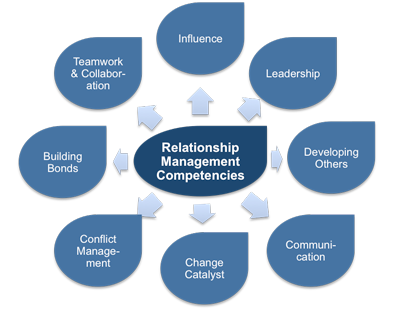Emotional Intelligence, Communication, and Coaching
The social skill of influence is enhanced when you are seen as being trustworthy and having positive intentions. People will be much easier to persuade to adopt your point of view if they believe that you have their interests at heart, and that you are willing to share opportunities for personal development as well as credit for successful outcomes.
Related to this influence is your ability to lead because you cannot lead someone without influencing them. The most important part of becoming a leader in the modern workplace is to be the person that others choose to follow. If you want more detail on this broad topic please take a look at out Leadership Skills eBooks.
Even where compulsion is possible, it tends not to work very well because if people decide that they don't want to do things your way, then they can find any number of ingenious ways to avoid doing so. In this instance you will spend so much of your time micro-managing such under-perform ing individuals that you won't have any time left to do your job properly. To learn more about why teams under-perform and how to identify and fix performance problems download our eBook on this topic.
One of the key things you can do as a manager is to recognize the strengths of the people you have working for you. Understanding people's strengths and how these can be used to contribute to the team effort is not always easy because strengths are as much about potential as they are about what has actually been achieved to date. But through coaching and constructive feedback you can offer assignments that challenge and foster a person's skills and growth.
 |
Even if you feel as though you understand your team members fairly well because you have been working with them for a long time, people may have hidden talents that you simply don't know about. It can often be worth finding out if this is the case by using a psychometric tool designed to identify people's strengths so that you can use them most effectively.
Your HR department may already have such tools available or it may have arrangements with tool providers. Alternatively, you may be able to find this type of tool online.
For example,
The strengths finder tool can be used to identify an individual's top strengths. Using something like this can help you to discover new strengths in your team members with minimal cost and effort.
Taking the time to develop your own coaching skills can greatly enhance your EQ in this area of relationship management.
Communications is a foundation stone in all management and contains some degree of emotion. How and what your say to others has the potential to evoke emotions in the recipient. Well-planned communications can help you to set the appropriate emotional tone, whereas poorly executed communications can trigger negative emotions, causing you unnecessary hassle.
There is a straightforward five-step process you can go through whenever you have a significant communication to make and this will ensure that you set the appropriate emotional tone:
• Determine your objective
• Understand how you feel about it
• Consider the recipient's point of view
• Choose an appropriate time and place
• Use a suitable method of communication.
By being very clear from the beginning about exactly what you are trying to achieve your communication will be focused and precise. Without a realistic objective from the start your communications will be vague and ambiguous.
Having set your objective you need to understand your own emotions before you begin. This is key to your success because you may need to reframe your message in neutral terms for your audience to accept, or at least acknowledge it as a valid point of view. This ensures that you do not project your own emotions onto the recipient and that you have taken account of their emotions in the communication - for example by using leading questions that they might simply disagree with.
Now your message must be communicated in a way, and at a time and place, that matches its essence. If the conversation is of a sensitive or potentially volatile nature you need to make sure that it takes place somewhere private. This type of message is likely best delivered personally rather than via email; appreciating the recipient's emotional reaction is key.
The timing of the communication can have a significant impact on how it is received. For instance, delivering bad news at the end of the day may not allow sufficient time for a response and it allows a whole evening for the recipient to seethe or worry. Having the same conversation first thing the next day enables you to discuss it properly or find a remedy for the situation. It also enables you to observe their nonverbal signals as well as hear their verbal response.
Communicating with emotional intelligence involves applying the domains of self-awareness, self-management, and social awareness. To learn more about the principles of communication download our free Communication Skills eBooks.
You may also be interested in:
Developing Emotional Intelligence | Self-Awareness | Self-Management | Social Awareness | Relationship Management | Emotional Intelligence, Change, Conflict, and Leadership.



